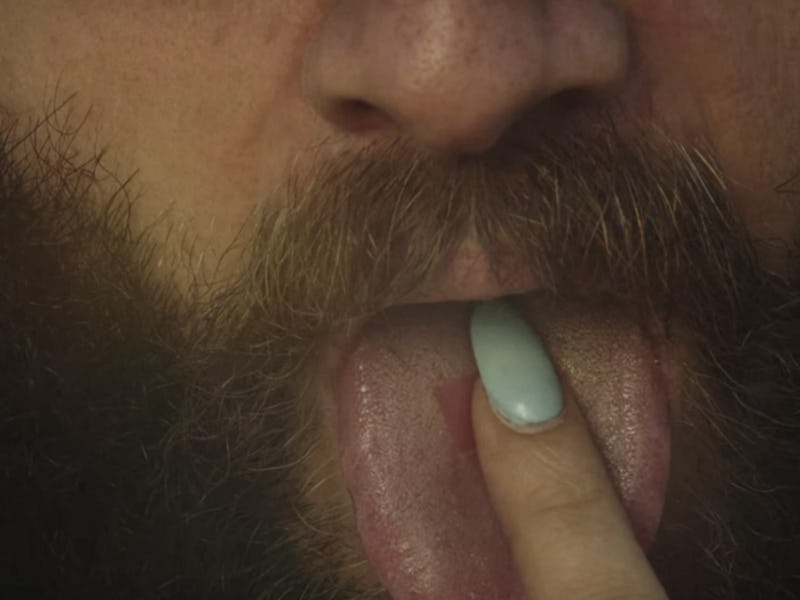Should Lana Del Rey Worry About Acid Flashbacks? Scientists Aren't Sure
Hallucinogen persisting perception disorder is a real thing, but the link to LSD is not fully understood.

In the new video for “Freak,” Lana Del Rey lifts a manicured finger off Father John Misty’s tongue, leaving behind a glimmering tab of LSD. A hazy baptism ensues, replete with Debussy soundtrack and Haim-styled sea sprites. For FJM, this is tripping at its finest: gorgeous and silly. But wouldn’t the dreamy joy of the hedonistic moment prove regrettable if it led to chronic flashbacks? The most notorious side effect of LSD use has long given both first-time and long-term users pause, but it remains unclear whether Father John Misty really has anything to worry about.
It hasn’t been easy to characterize the frequency and nature of repeated flashbacks — known among psychologists as hallucinogen persisting perception disorder, or HPPD — because it’s so hard to pinpoint what flashbacks actually are. As psychiatrist John Halpern put it in a review of HPPD studies in 2002, “the term ‘flashbacks’ is defined in so many ways that it is essentially valueless.”
Among the experiences the American Psychiatric Association counts as flashbacks are the sudden appearance of various shapes, colorful flashes of light, tails and halos trailing moving objects, and enhanced color intensity — all of which are “reminiscent of acute hallucinogen intoxication” and used to great effect in Del Rey’s “Freak.” What makes HPPD so hard to assess is that these visual phenomena aren’t exclusively the symptoms of LSD use.
Easy as it may be to characterize any of the above symptoms as “trippy,” pinpointing their actual origin is a messy affair. LSD users may be inclined to draw a direct link between especially vivid flashbacks and acid trips of days past, but weeks, months, or even years can pass between those events, leaving infinite room for variability.
One acid user may, for example, have an existing neurological condition or psychotic disorder that gives rise to hallucinations. Another may have taken other drugs, like MDMA, mushrooms, or salvia, in the interim. Yet another might be experiencing the effects of PTSD. For both users and their shrinks, classifying hallucinations as bona fide acid flashbacks has almost been impossible.
Despite its elusiveness, there’s little doubt that HPPD is a genuine condition. Case studies abound in both the scientific literature: one 2012 study — and there are a bunch of one-offs just like this — described a 33-year-old woman who developed HPPD after taking 30 tabs of LSD over a year at age 18 and experienced repeated visual disturbances, including a “glow-worm effect,” for the next 13 years. Another study, using user data from drug resource Erowid, found that 60 percent of the 2,455 hallucinogen users surveyed had experienced flashbacks after at least three days of being sober. This statistic is certainly significant enough to warrant attention, but again, no one is ever really sure whether LSD can ultimately be blamed.
Still, one statistic from the Erowid study stands out: Although visual symptoms were common in hallucinogen users, only 4.2 percent of users found them stressful enough to warrant treatment. Does this count as a risk? Of course it does. But you’re also probably about to eat a tab of acid you bought from the office rebel. Risks are a given.
Dropping acid comes with few guarantees: Not everyone trips out as gorgeously as Father John Misty’s psuedo-Christ, but, as far as we can tell, not everyone relives the experience, either — at least, not in a particularly intrusive way. It’ll take a long-term, seriously controlled study to ever objectively characterize LSD-induced HPPD, and with all the privately-funded research going into safe therapeutic hallucinogen use right now, there’s reason to believe that might actually happen. Until then, however, there’s not much committed users can do but hope for flashbacks characterized by “Freak”-level grandeur.